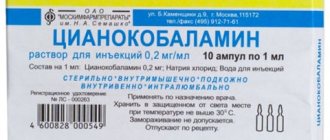Replace anaprilin
Best articles of 2021
He disappeared from pharmacies. At all. So familiar and, most importantly, budget-friendly. For many, passions for Anaprilin have still not subsided.
Thousands of unsuccessful requests in search engines and pharmacy services are evidence of this. They prompted me to write this article.
I do not undertake to give a definite answer to the question that worries many: what should I replace Anaprilin with? Because there is not always a simple answer to a simple question. I strongly advise against taking everything stated below as a doctor’s prescription. On the other hand, I want to arm you with information and encourage you. "
Anaprilin “went on vacation” and will return in a couple of months at best. There was a break in its production - and, fortunately, this is not a reason to despair and remain without treatment, waiting for the usual drug.
First of its kind
Why was he so good? I'll try to explain it simply. One of the main causes of hypertension is a malfunction of the adrenal hormone, adrenaline. It acts on β-adrenergic receptors, resulting in increased blood pressure and increased heart rate.
As you understand, this is a mechanism necessary for survival, allowing us to gather together in case of danger, quickly run if necessary, and even fight. But often in this process a disorder occurs: tachycardia and increased pressure occur for no apparent reason. This disorder is infamously called “hypertension”. How our ancestors didn’t treat it! The most outlandish and sometimes brutal methods were used, including bleeding patients.
And then in 1962, salvation was invented: propranolol (aka anaprilin) was synthesized for the first time. This drug of synthetic origin became the first beta-blocker to find clinical use. By blocking β1-adrenergic receptors, it reduces the harmful effects of excess adrenaline in the blood.
Need I say that propranolol has saved millions of lives? This term, by the way, exists in the English-language medical literature - “life saving drugs”. These words rightfully apply to beta-blockers.
The unconditional advantage of propranolol for the consumer was its fairly low price. Another advantage is debatable: propranolol begins to act quickly and “works” within a short period of time.
Because of this, it was often used as a “symptomatic drug” - to quickly relieve attacks. But for continuous use it is no longer so convenient: it must be taken several times a day. You need to keep the pills with you at all times and keep in mind the need for regular use. In addition, then it becomes not so cheap in comparison with other drugs.
My experience shows that propranolol is most often used by patients with thyroid pathology, suffering from attacks of sinus tachycardia (rapid rhythmic heartbeat) against the background of hyperthyroidism. At the same time, patients who take this drug irregularly certainly doom themselves to disastrous “swings” - sudden rises and falls in blood pressure without treating their underlying cause. This smoothes out the symptoms, but the disease progresses.
Another area of application for propranolol is the treatment of essential tremor. However, the mechanism of its antitremor effect is not fully understood.
Propranolol: skeletons in the closet
Now let's talk about the disadvantages of propranolol. In addition to β1-adrenergic receptors, there are also β2-adrenergic receptors. Interacting with them, adrenaline reduces the tone of the uterus, enhances intestinal motility, dilates the bronchi and peripheral vessels. And blessed propranolol acts on both types of beta-adrenergic receptors, that is, it is a non-selective beta-blocker.
The pitfalls of using this drug are:
• By reducing pressure and slowing down the heartbeat, it increases the tone of the uterus, which is why one of the areas of its application used to be obstetrics (stimulation of labor). Accordingly, it negatively affects the course of pregnancy.
• Propranolol causes constriction of the bronchi, so it is contraindicated for patients suffering from chronic bronchitis and bronchial asthma.
• By narrowing peripheral arteries, it is dangerous for patients with atherosclerosis.
• Peripheral spasm of the vessels supplying the gonads leads to their hypotrophy and, as a consequence, a decrease in the level of sex hormones and libido.
• Propranolol suppresses the gastrointestinal tract and can lead to chronic constipation.
• This medicine causes an increase in blood sugar levels and complicates diabetes mellitus.
• Finally, decreased potassium levels lead to increased fatigue.
As you can see, this drug affects not only the cardiovascular, but also the respiratory, genitourinary, endocrine and digestive systems.
That is, in addition to the positive effects, propranolol also has an abundance of side effects.
“The white light has converged on you like a wedge...”
But let's argue with this. In medicine, many groups of drugs are represented by several drugs. There is even a term - “me-too drugs”, which literally translates as “we are the same.”
Traditionally, after the medicinal properties of one drug are proven, they are by default transferred to other drugs of this class, which, from the point of view of evidence-based medicine, is very doubtful.
Following the introduction of propranolol into clinical practice, pharmacologists developed new beta blockers in an effort to achieve selectivity (i.e. selectivity) of the drugs while reducing side effects. Moreover, the selectivity of drugs depends on the dose of the drug: the higher it is, the lower the selectivity.
In addition, the duration of action of second-generation drugs has changed.
Thus, modern drugs are enough to be taken once a day, but their effect is achieved gradually, because it takes time for the active substance to accumulate in the body.
Along with this, some modern beta-blockers have a vasodilating effect (vasodilation), which is beneficial for the treatment of chronic heart failure.
Today, beta-blockers are one of the main groups of drugs widely used in the treatment of cardiovascular diseases. Their effectiveness has been proven in many clinical studies using meta-analysis. But what to hide, no other group of drugs used in cardiology has such a reliable evidence base.
Below is a list of the main beta blockers registered and approved for use in our country:
• Bisoprolol; • Metoprolol; • Nebivolol; • Carvedilol; • Atenolol (not recommended for chronic heart failure).
Why beta blockers are not compatible with self-medication
Beta blockers vary in their ability to dissolve in fats or water and are divided accordingly into lipophilic and hydrophilic. The degree of dissolution in fats and water determines the characteristics of their action in various clinical conditions in different groups of patients. Thus, lipophilic drugs are metabolized in the liver, and if it is damaged, an increase in the concentration of the drug in the blood may be observed. Hydrophilic drugs (considered mainly using the example of atenolol) are excreted primarily in the urine.
Therefore, when determining the dose regimen, it is necessary to take into account clearance - the time of elimination of the drug in the urine, individual for each patient.
Some drugs (primarily bisoprolol) have the ability to dissolve in both water and lipids. This means that if there is insufficiency of any excretory system (renal or hepatic), redistribution in a healthier, “sufficient” direction is possible.
In addition, it is important to remember that the beta blocker group is heterogeneous in its effects. Often, even a doctor has to rack his brains about which drug to prescribe in a given situation.
In my subjective opinion, in most clinical cases, the drug of choice for the treatment of hypertension, all forms of coronary heart disease and chronic heart failure may be bisoprolol. Its pharmacokinetics differs from the pharmacokinetics of other selective beta-blockers and is characterized by two positive properties:
• long half-life. This allows this drug to be administered once daily; • balanced clearance (dual pathway of metabolism - through the liver and through the kidneys). Therefore, it can be used in the treatment of patients with concomitant liver and/or kidney dysfunction.
If the drug is taken in therapeutic doses recommended by a doctor, it does not cause metabolic changes such as hyperglycemia (increased blood glucose) and hypokalemia (decreased potassium levels in the blood).
Anaprilin
Monitoring of patients taking Anaprilin should include monitoring the number of heartbeats and blood pressure (at the beginning of treatment - daily, then once every 3-4 months), an electrocardiogram.
In elderly patients, it is recommended to monitor kidney function (once every 4-5 months).
In case of increasing bradycardia (less than 50 beats/min), arterial hypotension (systolic blood pressure less than 100 mm Hg), atrioventricular block, bronchospasm, ventricular arrhythmias, severe liver and/or kidney dysfunction in elderly patients, it is necessary to reduce the dose of the drug or stop treatment. It is recommended to discontinue therapy if depression caused by taking beta-blockers develops.
The patient should be trained in the method of counting the number of heartbeats and instructed about the need for medical consultation if the number of heartbeats is less than 50 beats/min.
It is recommended to discontinue therapy if depression caused by taking beta-blockers develops.
Patients using contact lenses should take into account that during treatment there may be a decrease in the production of tear fluid.
Before prescribing Anaprilin, patients with heart failure (early stages) must use cardiac glycosides and/or diuretics.
Treatment of coronary heart disease and persistent arterial hypertension should be long-term - taking Anaprilin is possible for several years.
Discontinuation of treatment is carried out gradually, under the supervision of a physician: abrupt withdrawal can dramatically increase myocardial ischemia, anginal syndrome, and worsen exercise tolerance.
Cancellation is carried out gradually, reducing the dose over 2 weeks or more (reduce the dose by 25% every 3-4 days).
In patients with diabetes mellitus, the drug is used under the control of blood glucose levels (once every 4-5 months).
In case of thyrotoxicosis, Anaprilin can mask certain clinical signs of hyperthyroidism (for example, tachycardia). Abrupt withdrawal in patients with thyrotoxicosis is contraindicated as it can increase symptoms. When prescribing beta-blockers to patients receiving hypoglycemic drugs, caution should be exercised, since hypoglycemia may develop during prolonged breaks in food intake. Moreover, its symptoms such as tachycardia or tremor will be masked due to the action of the drug. Patients should be instructed that the main symptom of hypoglycemia during beta-blocker treatment is increased sweating.
Prescribe with caution in combination with hypoglycemic agents (the risk of hypoglycemia during insulin therapy and hyperglycemia during oral hypoglycemic agents).
When taking clonidine simultaneously, it can be discontinued only a few days after Anaprilin is discontinued.
Patients with pheochromocytoma are prescribed only in combination with alpha-blockers.
Do not use simultaneously with antipsychotic drugs (neuroleptics) and anxiolytic drugs (tranquilizers). Medicines that reduce the supply of catecholamines (for example, reserpine) may enhance the effect of beta-blockers, so patients taking such combinations of drugs should be under constant medical supervision to detect arterial hypotension or bradycardia.
Avoid intravenous administration of verapamil and diltiazem during therapy with Anaprilin.
Use with caution in combination with psychoactive drugs, for example, monoamine oxidase inhibitors, when used for a course of more than 2 weeks.
A few days before general anesthesia with chloroform or ether, it is necessary to stop taking the drug (increased risk of depression of myocardial function and the development of arterial hypotension).
In smokers, the effectiveness of beta-blockers is lower.
During treatment, it is not recommended to take ethanol (a sharp decrease in blood pressure is possible).
The drug should be discontinued before testing catecholamines, normetanephrine and vanillylmandelic acid in blood plasma and urine; antinuclear antibody titers.
Avoid using natural licorice during treatment; Protein-rich foods can increase bioavailability.











